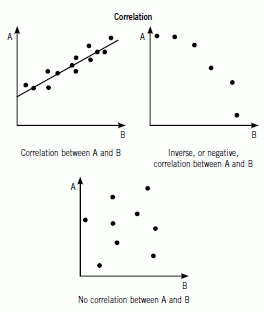Wireless Communications
Radio Waves
Radio waves are used for broadcasting radio and TV programmes. Anyone with a receiver can tune it to the radio frequency to pick up the signal.
When radio stations use similar transmission frequencies the waves sometimes interfere with each other. Medium wavelength radio waves are reflected from the ionosphere so they can be used for long distance communication, but not for communicating with satellites above the ionosphere.
Microwaves
The transmitter and receiver must be in line of sight, (one can be seen from the other), so they are positioned high up, often on tall masts. They must be close together so that hills, or the curvature of the Earth, cannot block the beam.
Signals are sent to and from satellites, which relay signals around the Earth. This may be for TV programmes, telephone conversations or monitoring the Earth, for example weather forecasting.
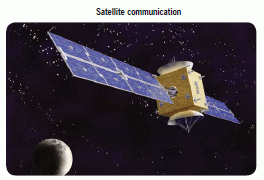
Maximise Your Marks - Make sure you can compare the use of microwaves and radio waves. In ‘compare’ answers refer to both, for example microwaves pass through the ionosphere, but medium wave radio waves do not.
Diffraction
Diffraction is the spreading of a beam through gaps and around corners. The maximum effect occurs when the gap has a similar size to the wavelength.
Radio waves of about 5 m are diffracted by large buildings. Radio waves of 1 km are be diffracted around hills and through valleys, so they are able to reach most areas and are suitable for broadcasting.
Microwave beams of a few centimetres do not spread round corners or around hills. This is why the transmitters and receivers must be in line of sight. When microwaves are transmitted from a satellite dish the wavelength must be small compared to the dish diameter to reduce diffraction. This means that, compared to radio waves, microwaves can be sent as a thin beam.
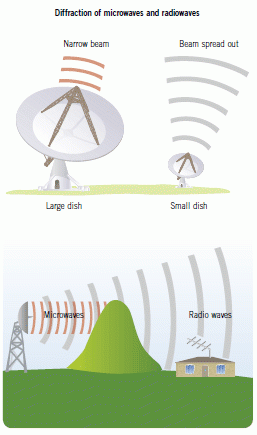
Analogue and Digital Signals
Radio waves, microwaves, infrared and visible light are all used to carry information, which can be sound, pictures or other data. The information is called the signal. It is added to an electromagnetic wave called the carrier wave so that it can be transmitted. When the wave is received the carrier wave is removed and the signal is reconstructed. There are two types of signal, analogue and digital.
An analogue signal changes in frequency and/or amplitude continually in a way that matches changes in the voice or music being transmitted.
A digital signal has just two values – represented as 0 and 1 (or on and off). The signal is converted into a code of 0s and 1s. It becomes a stream of 0 and 1 values. These pulses are added to the carrier wave and transmitted. After the signal is received it is decoded to recover the original signal.
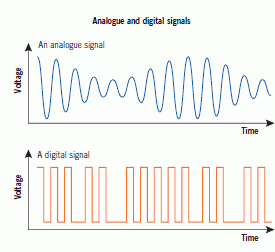
Wireless and Mobile Phones
Wireless communication uses microwaves and radio waves to transmit information. The advantages of this are:
- No wires are needed to connect laptops to the internet, or for mobile phones or radio.
- Phone calls and e-mail are available 24 hours a day.
- Communication with wireless technology is portable and convenient.
Mobile phones use microwave signals. The signals from the transmitting phones are reflected by metal surfaces and walls, and travel through the air to communicate with the nearest transmitter mast.
There is a network of transmitter masts to relay the signals on to the nearest mast to the receiving phone.
It is unclear whether there are any long-term effects of using mobile phones. There may also be a risk to residents living close to mobile phone masts.
Most people consider the risks and benefits, and decide that the benefit of using a mobile phone outweighs the risk.
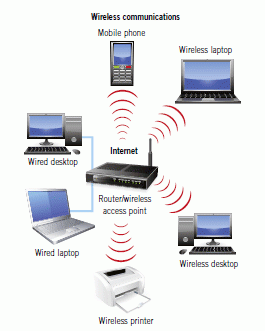
Correlation Between Factors
A good study uses a large sample of thousands of people. The sample will be matched, so that scientists compare the same type of people who use mobile phones with people who don’t, to see if this is a factor that increases the risk. For example, they might compare women, children, or men who smoke. If they find a correlation, they will look to see if this is due to a different cause. A correlation is a link between two factors.
If there is a correlation it does not always mean that one factor causes the other. For example, there is a correlation between increased sales of ice cream and an increase in hay fever, but this does not mean that eating ice cream causes hay fever. Both increase in hot sunny weather.
It is important to scientists to find a mechanism that explains why a factor causes an outcome. For example, the mechanism by which radioactive materials cause cancer is the radiation ionising atoms and damaging body cells.
